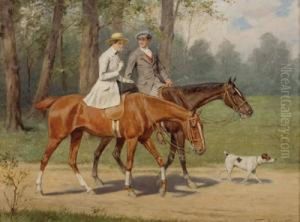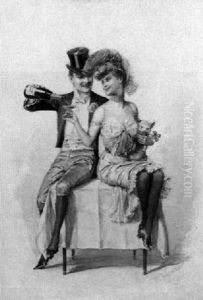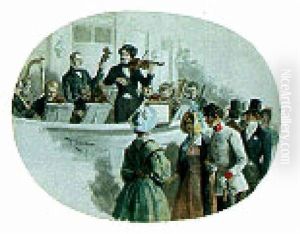Theodor Zasche Paintings
Theodor Zasche was an Austrian painter and illustrator, born in 1862 in Pilsen, which at the time was part of the Austro-Hungarian Empire and is now in the Czech Republic. He was known for his detailed and often whimsical illustrations, portraying scenes ranging from everyday life to fantasy and folklore.
Zasche received his artistic training at the Academy of Fine Arts Vienna, where he studied under notable artists such as Christian Griepenkerl and Leopold Carl Müller. His education at this prestigious institution equipped him with the skills that he would later apply to his own distinctive style of illustration.
Throughout his career, Zasche contributed to various magazines and periodicals of the time, providing illustrations that captivated the audiences of the early 20th century. He worked for well-known publications like 'Meggendorfer Blätter,' a German humor magazine, and 'Fliegende Blätter,' another illustrated magazine. These works helped him to gain considerable fame during his lifetime.
Zasche's illustrations were characterized by their fine detail, nuanced use of color, and often, a sense of humor. He had the ability to capture the essence of the subjects he portrayed, whether they were scenes from middle-class life, narratives from literature, or elements of fantasy. His work included book illustrations, postcards, and standalone pieces, all of which were highly sought after.
Despite his success, information about Zasche's personal life and career is somewhat limited. He lived through a period of great change in Europe, witnessing the turn of the century and the significant events leading up to the end of World War I. These events may have influenced his work, although the extent of this influence is not well documented.
Theodor Zasche passed away in 1922, leaving behind a legacy of delightful and engaging illustrations. His work continues to be appreciated by collectors and enthusiasts of early 20th-century illustration, and his contributions to the field have ensured him a place in the history of Austrian art.


